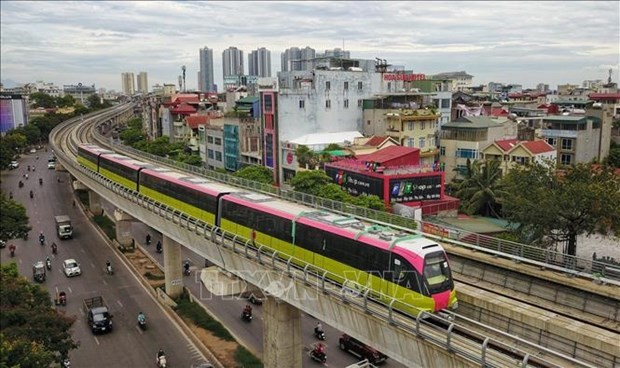
Hanoi begins study on urban railway route No.6
Latest
 |
| Illustrative image. (Photo: VNA) |
The study project will be financed by non-refundable ODA capital provided by the Australian government via the World Bank (WB).
The MRB, as the project’s coordinator, will be responsible for working with World Bank experts on the contents of the project, which is expected to propose forms of investment for the urban railway route.
The model of transit-oriented development (TOD) will be considered with the aim of recovering part of investment in urban railway, enhancing investment efficiency and easing pressure on the state budget.
Under the Hanoi urban railway network plan until 2030, the capital would have 10 lines with a total length of 417 km; of which 342 km would be elevated and the rest underground.
So far, only the first Cat Linh-Ha Dong line has been completed and in operation.
The Cat Linh-Ha Dong metro line started running last November. It was officially inaugurated on January 13 this year and welcomed the one millionth passenger the same day, marking a new milestone in the country’s urban railway construction as it is the first metro line in Hanoi and Vietnam.
With total investment of approximately 886 million USD, funded by Chinese ODA, the elevated line is more than 13km long and has 12 stations and 13 trains. Each train, whose designed speed is 80 km per hour, has four carriages capable of carrying over 900 passengers.
The Cat Linh-Ha Dong urban metro line has transported nearly 6 million passengers during more than nine months of operation, according to Hanoi Metro One Member Limited Company (Hanoi Metro).
The other lines are still in different phases of development.
The Nhon-Hanoi Station line (Line No. 3) is set to have its elevated section operating at the end of 2022, and the entire line operating in 2027. Construction on this railway line started in 2008 and was initially planned to finish in 2015.
The double-track railway line is 12.5km long, with the elevated sections spanning 8.5km and the remaining 4km underground. It runs through six districts: Nam Tu Liem, Bac Tu Liem, Cau Giay, Ba Dinh, Dong Da and Hoan Kiem. It consists of 12 stations including eight elevated and four underground. Only 75% of the work has been completed, with investment doubling to more than 34 trillion VND (over 1.45 billion USD).
Prime Minister Pham Minh Chinh ordered that elevated sections of the Nhon – Hanoi Station urban railway must be completed before December 31, 2022, during a meeting with contractors and leaders of concerned ministries and Hanoi on August 7.
Hanoi plans six more underground urban railway lines with a combined length of 86.5 kilometres under an underground space planning project to 2030, with a vision towards 2050.
With an annual growth rate of 7 per cent, Vietnam is one of the fastest-growing economies in Asia. Vietnam’s cities are also experiencing rapid growth. It is expected that 50 per cent of the population will live in urban areas by 2025. As the country’s capital, the city needs to develop a transportation infrastructure accordingly.
Hanoi aims to develop a public transport system that can meet 30-35% of local residents’ travel demand by 2025. The metro system is expected to be the backbone of the city’s public transport network, helping reduce traffic congestion, urban pollution and improve the quality of life for people in the city.

















